The osteoarthritis of the hip joint is a disease that is also referred to as a coksart -rose and occurs in a person due to a decrease in the amount of the synovial fluid emitted in the joint cavity.The result is a violation of the nutrition of the cartilage and the gradual destruction of the articular surfaces.The disease is inherent in a chronic course, which is not characterized by inflammatory, but by degenerative change in the cartilage tissue and gradual deformation of bone tissue.
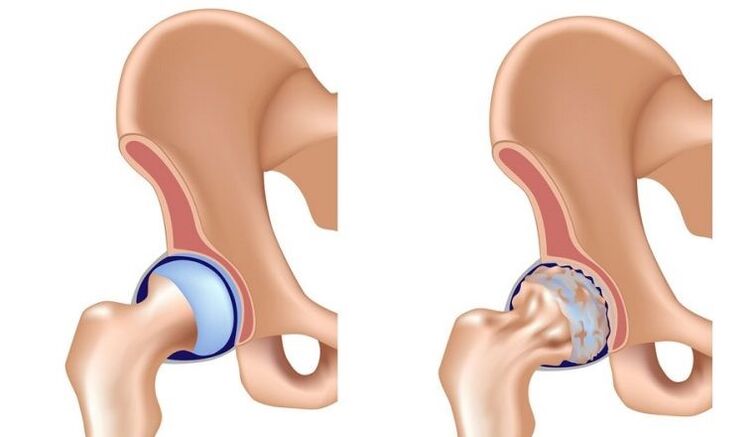
Treatment of coksart rose is a long and difficult process, the solution of which is the revetologist and selects the correct treatment scheme.In the case of improper treatment, deep deformation with the exhaustion of joint structures is possible, the disease is quickly forward and can lead to disabilities and a complete loss of the motor activity of the affected joint.
Symptoms
The timely detection of the disease is an important component for further successful treatment.In the early stages of the disease, however, the symptoms are only a few and only limited to local pain, without obvious signs and external changes (lack of edema, color change and structure).For this reason, in most cases, a person simply does not pay attention to the manifestation of these characters, whereby the doctor shifts a visit to the doctor and thus slowly and correctly progresses the illness.
There are four degrees osteoarthritis and in each stage there are certain symptoms in 1, 2 3 or 4 stages, but there is a certain series of symptoms if you determine which you should immediately consult a doctor to recognize a real illness.Such symptoms include:
- Strong pain in the thigh, groin area.The pain is real and subsides after a short break.
- Morning stiffness of the joints.A characteristic feature of joint diseases that manifested itself mainly in the morning after a long vacation.It is characterized by the limitation of the mobility of the limb, stiffness and unpleasant sensations.Usually it is necessary about an hour after waking up to disappear the symptoms.
- A crunch in the joint, rings when walking.
- Gang change, the appearance of lameness.
- The appearance of the difference of the length of the limbs.This symptom can be found in the later stages of the disease that the deformation of the structure of the pelvis, the deformation, is associated with a change in the structure of the pelvis.
The symptoms mentioned above are common and can be found in many other diseases, which is why it is necessary to consult a good specialist with additional research methods for correct differential diagnosis with other similar diseases and to make a precise diagnosis.
Reasons
When they grow old, the human body is decreased and the work of all systems and organs gradually slowed down, the metabolism slows down.This applies to the condition of bones, joint bags and cartilage, which are diluted and deformed under the influence of constant loads over time.The amount of synovial fluid that fills the joint cavity is lost, which leads to a decrease in natural depreciation and the increase in the load, followed by the destruction of the articular cartilage.
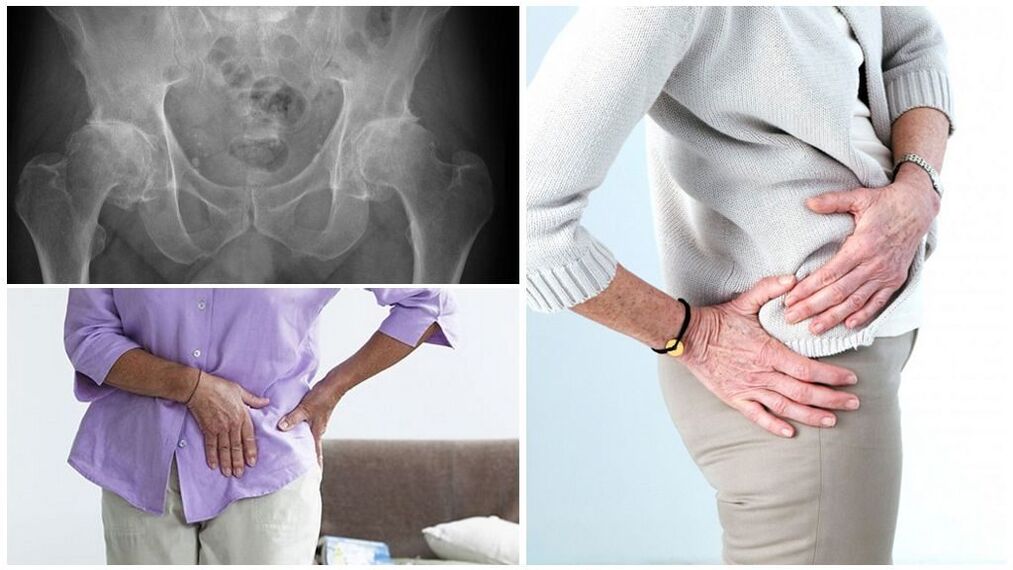
In addition to physiological, which are associated with natural age changes in the body, other reasons also include the occurrence of osteoarthritis of the hip joint:
- Heavy physical work.
- Inheritance (it belongs to the hip dysplasia).
- Obesity.Excess body weight increases the load of the musculoskeletal system.
- Hormonal disorders.
- Inflammatory diseases (infectious arthritis, rheumatoid arthritis).
- The post -traumatic arthrosis of the hip joint occurs by 20–40% after injuries.
Types and degree of illness
Based on the results of the clinical image and on the basis of radiological indicators, 4 degrees of illness are differentiated.
The first degree
If the disease is demonstrated at this stage, the treatment is most effective, the affected joint can be preserved by ensuring the correct treatment scheme without surgery.However, recognizing the disease in this stage is not so easy, since the symptoms that manifest themselves are insignificant and are characterized by such symptoms:
- Morning stiffness.
- Pain in the groin area.
- Minor, painful pain that occurs during the physical exertion in the area of the hip joints.
- In radiography there is a slight narrowing of the joint column in the presence of 1 degree of the disease, individual herds of the sealing hyaline and bone growth in the swivel area are possible.
The second degree
The second degree of the disease manifests itself through more pronounced symptoms.This phase is characterized by:
- The appearance of pulling, painful pain in the joints, not only after physical exertion, but also with minor motor activity.The pain intensifies in the evening and at night.
- A change in the passage appears in motor activity.There is a "duck walk", a person who limps after a long walk and tries to rely on a healthy leg and thus protect those affected by the aching connection.
- The movement of the affected hip joint is a violation, the difficulty of leaving the affected member.
- The X beam marks a significant narrowing of the common gap and bone growth.
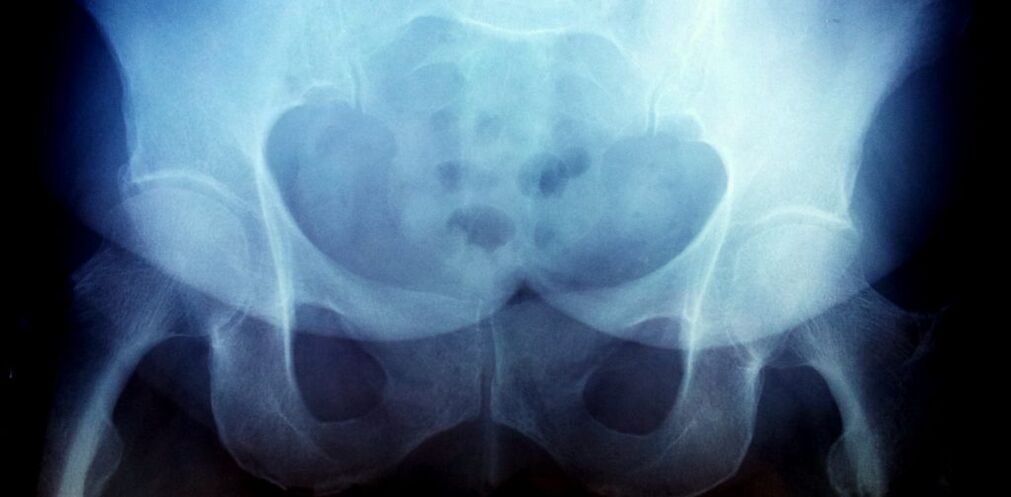
The third degree
The clinical picture has given manifestations in which there are:
- Constant severe pain at loads and in peace.
- Complete loss of the motor activity of the affected joint.
- The appearance of the difference of the length of the limbs.The leg with the affected joint becomes shorter than a healthy link.
- The X -beam marks the complete destruction of the hyalink norpel, the growth of large osteophytes, the destruction of the femur.
The fourth degree
The osteoarthritis of the pelvis of the 4th degree is characterized by the complete atrophy of the muscles, which surround the hip joint of the affected limb.A complete loss of the physical function is also found in 4 stages.The patient is unable to step on the painful leg and cannot get by without crutches.On the X -Ray there is osteocosclerosis of the bones, large bone growth and the complete lack of a common gap.
Treatment of this phase is only possible in an operative way.
Diagnosis
In order to make an exact diagnosis and carry out timely treatment, a number of certain studies are required.The diagnosis is made in several stages.
- General inspection, collection of anamnesis of the disease.The doctor will clarify the information about the presence of injuries, related illnesses and an existing lifestyle.A correctly carried out examination helps to correctly make a diagnosis, to determine the degree of the disease and to eliminate a number of diseases that have similar symptoms such as arthritis and idiots.
- In addition to the examination, the lawyer prescribes the necessary laboratory tests.
- The X beam examination is a mandatory diagnostic point.An examination of the hip joint of both legs is carried out, even if the patient's symptoms only apply to a link.
- Computer tomography is regarded as an additional research method.With CT you can examine the nature and degree of damage to the femur and the articular surfaces.
Treatment of osteoarthritis
If suspicious symptoms and pain occur in the hip joint, a person mainly arises when it comes to the question of which doctor treats such diseases and how self -mediation occurs.
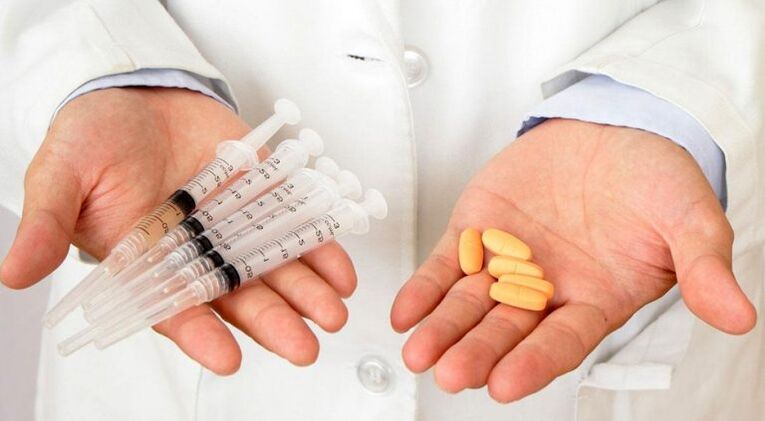
With the first symptoms, it is necessary to search for help with diagnosis and treatment with a rheumatologist, while the treatment of serious forms of osteoarthritis is involved in an orthopedic surgeon.
The treatment depends on the degree of illness and the type of manifestation.The treatment scheme is selected individually by a doctor for each patient.The basic principles of treatment include events such as:
- Drug treatment.
- Diet.
- Physiotherapy.
- Massage.
- Gymnastics.
- KineseoteiPing (glue of the hip joint with special patching).
- They fall back on the help of sticks and crutches to remove the load from the affected connection.
Pharmaceutical therapy
The treatment scheme for lesions of the hip joint without failure includes medication.The earlier you start with the therapy, the more likely it is that the treatment of conservative methods restricts without surgical intervention.
The diagram of drug treatment includes a drug complex:
- In order to relieve pain and reduce the inflammatory process, non -steroid inflammatory drugs are used.
- If the liquid accumulates in the joint cavity, intra -cardboard injections are used.
- Chondroprotectors are used to feed tissue and improve blood circulation.
- Use locally therapeutic ointments that relate to the area of the affected connection.
Physiotherapeutic methods
The physiotherapeutic method aims to improve the blood supply of the affected joints and improve the metabolic processes.The physicalization of the arthrosis of the hip joint includes:
- Magnet laser therapy.It helps to reduce pain and improve the mobility of the affected joint.
- Laser treatment.The effect of the light laser aims to remove the inflammatory process, the reduction of edema and the restoration of the cartilage.
- Thermal therapy.It includes mudding and paraffin therapy due to the thermal effect on the affected area, the blood circulation improves and the metabolic processes are normalized.
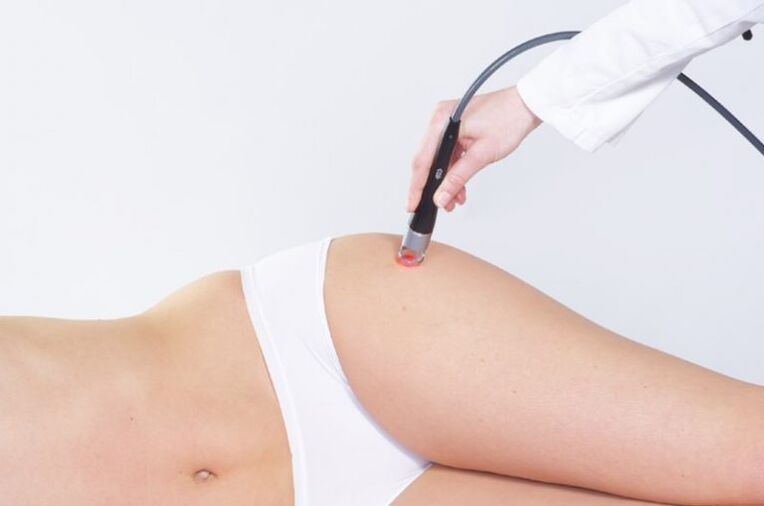
Every type of physiotherapeutic process has a positive effect on the affected joints, but at the same time a number of contraindications.It is not allowed to carry out physiotherapy during pregnancy, oncology, tuberculosis.
Massage and therapeutic gymnastics
This group of therapeutic measures is an essential part of the complex treatment of coxarthrosis.
The advantages of massages and therapeutic gymnastics:
- Improvement of blood circulation.
- Remove muscle cramp.
- Increased motor activity in the affected joint.
- Reduce pain.
- An increase in the diastasis in the joint of the affected connection.
Massage sessions may be carried out in all stages of the disease, but for every stage, whereby certain diseases are retained.The therapeutic massage is only carried out by a specially trained specialist.Each massage session takes place in several stages:
- Back massage.It is carried out with the help of strokes with the palms, helps to increase blood circulation and prepare for the next stage.
- Manual massage of the lower back.It consists of the same caress, rubbing and kneading in the lumbar cone region.
- Massage of the sacral and berry area.
- Thigh massage.During this phase, the specialist exposes and rubbing massage movements and captures the area of the affected joint.
In 1 and 2 stages of the disease, it is recommended to carry out a self -massage session that dedicates the process for at least 5 minutes a day.
During the Self Massage meeting, the sequence of actions is also important, and it is necessary to take the following exercises alternately:
- Massage the area of the back with your palms, make the rising and descending stroking along the spine and then make friction movements with the back of the fists.
- Start in a standing position with the massage of the buttocks and stroke a sacrum and lumbar area from hips.After you have finished stroking to rub.
- The last phase is the massage of the hip muscles, which is carried out in a seated position.Alternative strokes, rubbing and kneading are carried out.
3 and 4 stages of the disease indicate a massage after a surgical operation, a course of the therapeutic massage for fast rehabilitation is carried out.

Massage sessions are best changed with a course of therapeutic gymnastics.The gymnastics for arthrosis aim to increase blood flow in the muscles of the hip joint, which contributes to better saturation of joints with nutrients.
The technology of each author has its own characteristics and a number of contraindications to determine which scheme of gymnastics exercises adheres to the applicable doctor.
At home you can do a number of simple exercises, such as:B.:
- In the position of lying on the back, lift each leg at an angle of 50 degrees.
- Try to reach your knees.
- Take it off in a standing position and lift your straight leg back and try to keep it in this position for a few seconds.
When it comes to gymnastics, it is important not to perform tasks as far as possible and at the same time maintain an even, quiet breath.Sharp, inaccurate movements can lead to injuries.It is important to remember that only the appealing doctor can prescribe exercises based on the condition of a specific patient.In addition, the exercises should be carried out in the presence of a specialist in order to control the correctness of the exercise.
Diet therapy
Nutrition plays an important role in treatment.When treating osteoarthritis, it is recommended to use 1600-1800 KCAL per day, which distributes the daily volume of 5-6 meals.The food should be balanced and rich vitamins and trace elements.In the event of overweight, a well -suited diet helps to reduce weight gain, which reduces the load of the aching joint.
If you observe the right nutrition, you must take into account which products must be included in the daily menu and what should be excluded completely by your diet.
| Recommended: | It is necessary to limit: |
| brawn | Strong coffee |
| Vegetables, fruits | Alcoholic drinks |
| Low -fat varieties of meat and fish | Bakery products |
| Milk and dairy products | Salt |
| Green | |
| Legumes | |
| Buckwheat | |
| Nuts |
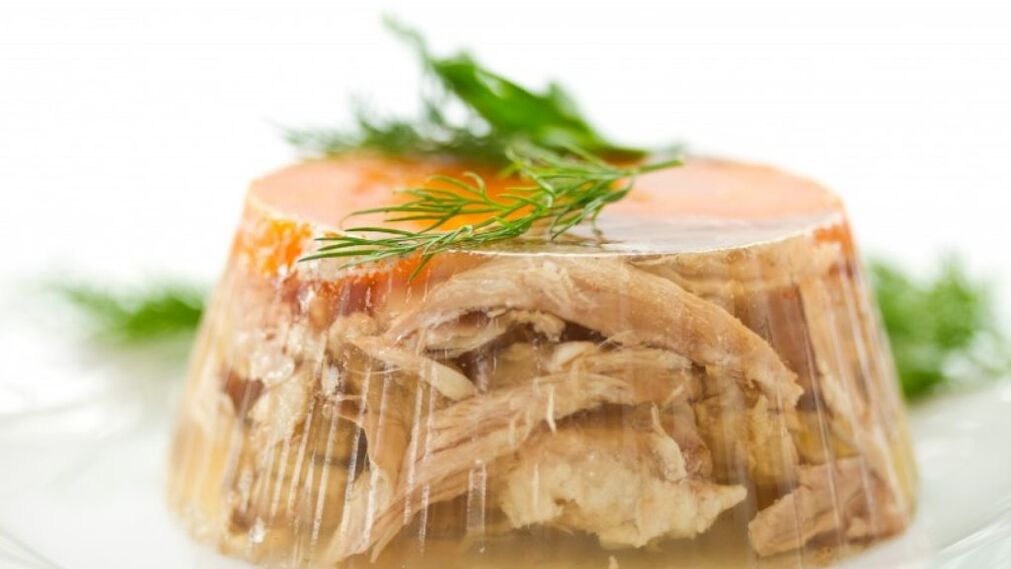
It is necessary to include a sufficient amount of vegetables and fruit in the food, to increase the consumption of dairy products.It is worth giving products, rich animal proteins (beef, turkey, chicken, low -fat fish varieties with low fat).It is recommended in the menu, which is rich in collagen, to strengthen and restore the cartilage tissue of the joints.
operation
The treatment of arthrosis of the hip joint in the early stages is limited by conservative methods.Often a fairly correctly selected scheme of drug treatment and the appointment of auxiliary methods to improve the patient's condition and slow down the progress of the disease.Treatment of 3 and 4 degrees osteoarthritis in a number of cases implies the need for surgical intervention that exists in the operation to replace the joint.
When do you need an operation?
1 and 2 stages of the arthrosis of the hip joint are treated with 3 and 4 without surgical intervention.An operation will be required sooner or later.The operation is proposed to the patient when changes in the joint achieve the extreme stage with complete destruction of the articular cartilage and the large profit tower growth of bone tissue.
After operation, a massage and training therapy for the rapid restoration of motor activity are prescribed in the rehabilitation period.
Traditional medicine
What is osteoarthritis of the hip joint and how to treat them in detail by the doctor rheumatologists?After consulting the treating doctor and the appointment of the treatment scheme, it is recommended to check as auxiliary methods of the treatment medication.Treatment of osteoarthritis with referendum is a good additional method and helps reduce pain, relieve edema, to increase joint mobility.
2 methods are used in the treatment of folk funds:
- To take (decoctions, tinctures of healing herbs).
- For local use (ointments, compresses, packaging).
To remove the main symptoms of the disease, a tincture based on a saber is used:
- The sumptobic must be mixed with medical alcohol in a ratio of 1:10 and removed in a dark place for several weeks.
- Then cook, strain and use to receive 1 tablespoon.l.3 times a day.
- At night you can rub the tincture directly into the area of the affected joint to relieve inflammation and reduce pain.
The compress based on cabbage leaves has proven itself in the treatment: Several cabbage leaves and a Burdockblatt should mix, kneaded with the hands until the juice is formed for 30 minutes and attached to the lesion.This method helps reduce inflammation and pain.
Medical herbs are actively used in the treatment of folk remedies.These include: St. John's spice, mint, chamomile, Celandine.To get a healing ointment, you have to grind the grass by mixing it with an oil lake or a baby cream and rubbing the ointment into the joint immediately after cooking.
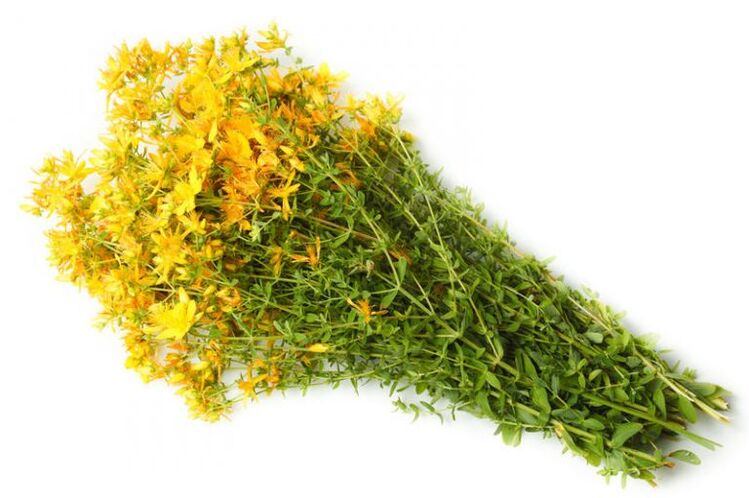
All additional treatment methods should only be regarded as auxiliary methods that are unable to heal an illness independently, and, in combination with medication, to improve the effect in the complex of therapeutic methods.
prevention
For the prevention of the disease, it is recommended to carefully monitor your health, strengthen immunity, lead a healthy lifestyle and carefully monitor the quality of the diet.
An important measure in the prevention of osteoarthritis is the prevention of hypothermia and restricting physical exertion.People with an excess body weight are recommended to observe a diet that aims to reduce weight and prevent the stress of the musculoskeletal system.
For the general strengthening of immunity, hardening and balanced physical exertion are preferred.
Pregnancy and birth
The dylastic arthrosis of the hip joint is the congenital pathology of the hip joint, which occurs due to the improper formation of joint tissues during the intrauterine development.In most cases, this pathology is successfully healed with timely detection of the disease over time, the risk of developing the arthrosis of the hip joint in adulthood.
During pregnancy, in the presence of osteoarthritis of the hip joint, the overall burden of the affected joint increases significantly due to an increase in the overall weight of the body significantly exacerbates the course of the disease.In addition to increasing the load due to body weight in pregnant women, the eating of the joints worsens and the metabolism slows down.This is due to an increase in the costs of the body's own resources in order to deliver everything for the fetus.
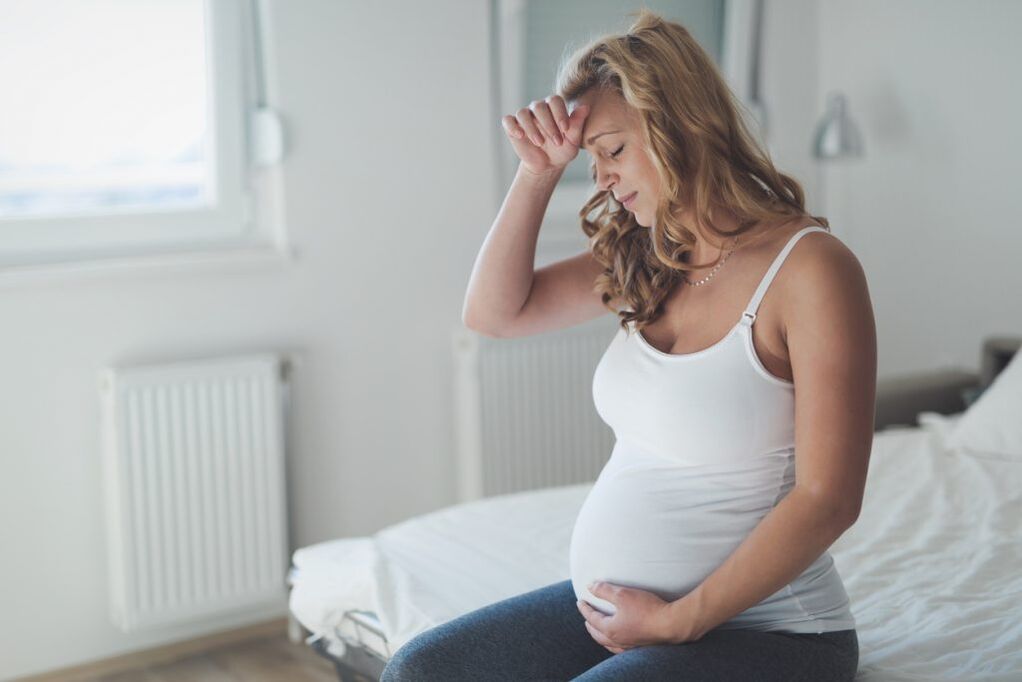
A pregnant woman in the presence of such a disease as osteoarthritis of the hip joint is strongly recommended to observe certain diseases throughout pregnancy, namely:
- Limit motor activity, especially in the third pregnancy trimester, the maximum load on the pain joint.
- A constant observation by the doctor is necessary.
- It is recommended to follow the doctor's recommendations.
- Swimming classes have a positive impact on the distribution of the load in the body, increase the muscle mass in the area of the affected joint and the voltage removal.
forecast
With the timely diagnosis of the arthrosis of the hip joint, the forecast is favorable.If the disease is detected in the first stages, the treatment is conservatively, the development of the disease slows down and is often completely healed if it does not reach 2 degrees at the time of the diagnosis.
In 3 and 4 stages of the disease, the forecast in the implementation of a prompt surgical company remains favorable, whereby the condition for compliance with all recipes recommended by the doctor and the exercise of the constant control of the doctor present is observed.With well -guided operations, the artificial connection is used for several decades.
Complications
The most important and most unfavorable complication is a possible disability.Disability occurs due to the complete loss of the motor activity of the injured joint.With a symmetrical lesion of both joints, a person loses the ability to move independently, which significantly limits the lifestyle and also creates a risk of the development of other complications (stagnating pneumonia, pressure sore).
In order to prevent such serious consequences, it is recommended to start treatment when the first signs are identified, which prevents the disease from progressing.




















